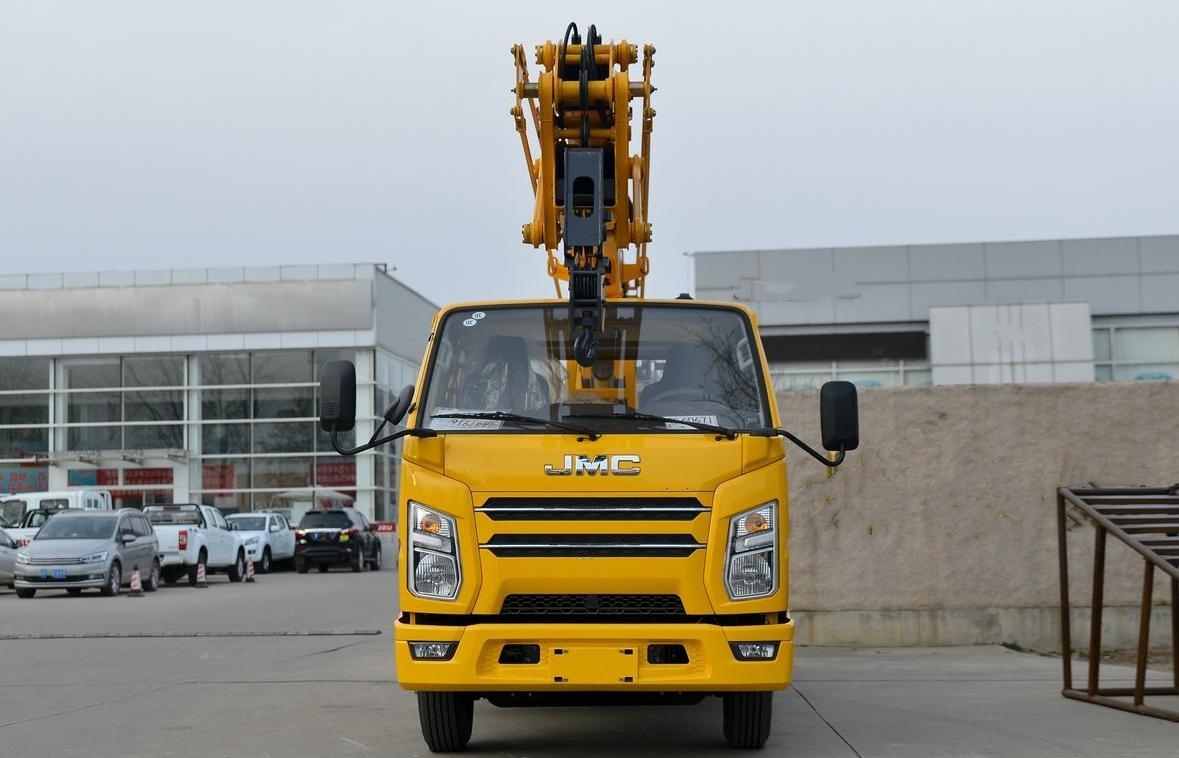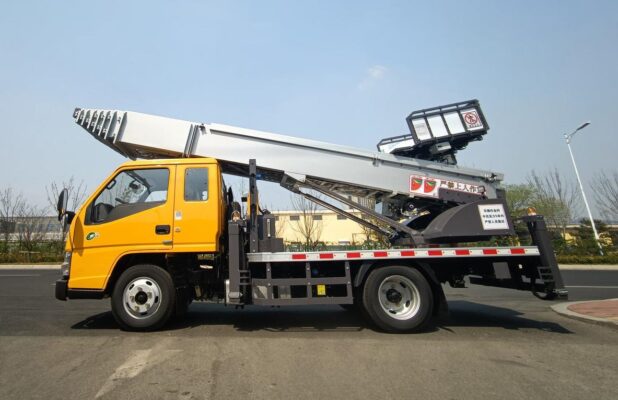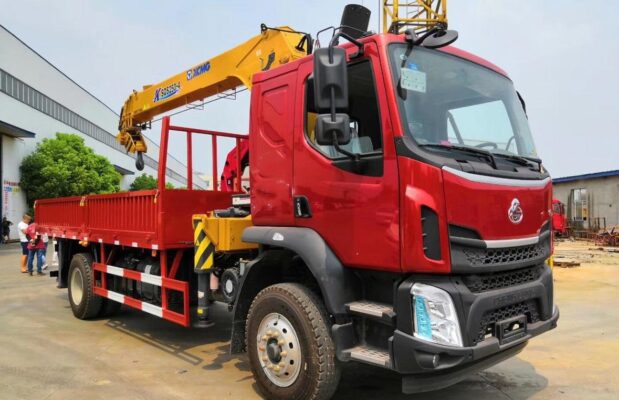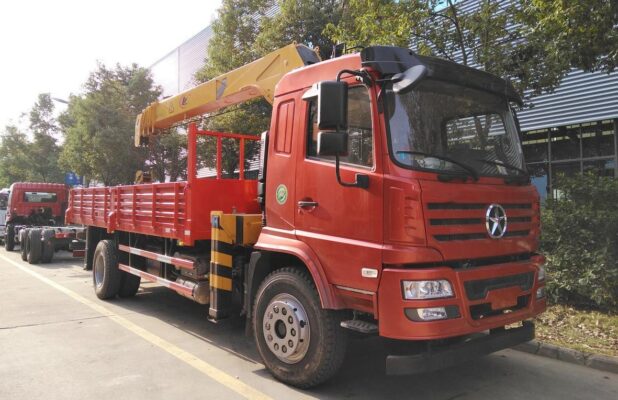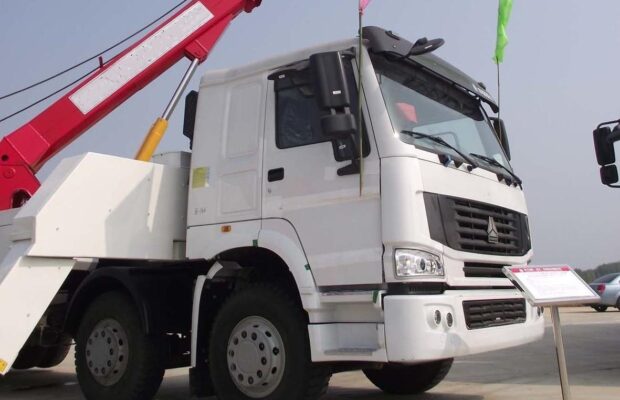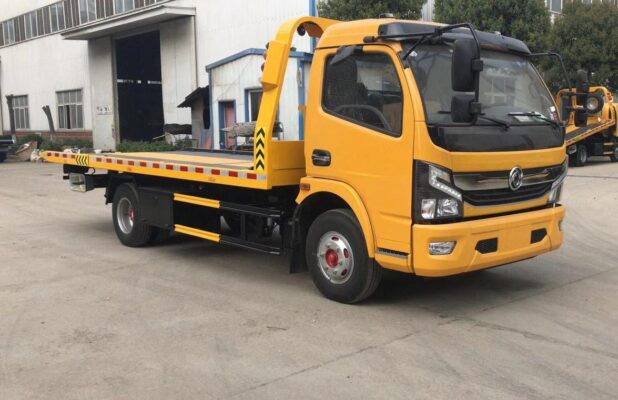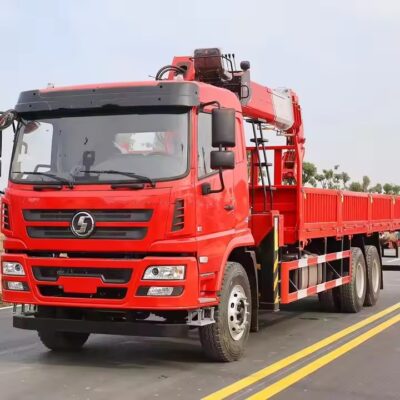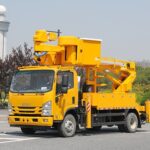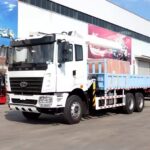Truck-mounted cranes are versatile and powerful machines utilized across various construction and lifting operations. However, their effective and safe operation requires strict adherence to safety protocols. Below are comprehensive safety operation considerations that should be followed to ensure the safety of operators, bystanders, and the equipment itself.
1. Adhere to Rated Lifting Load Limits
Always operate within the rated lifting load range specified in the crane’s “User Manual.” The rated lifting load represents the maximum total mass that can be safely lifted, including the weight of any lifting accessories. Each crane has different lifting capacities at various working radii, and understanding these specifications is crucial. Operating beyond these limits can result in structural failure of the crane, leading to catastrophic accidents.
Key Points:
- Consult User Manual: Always refer to the user manual for specific load capacities.
- Consider Working Radii: Understand how the rated load varies with the distance from the crane’s center of rotation.
2. Monitor Boom Deflection
Under load, the main boom may experience deflection, which can inadvertently increase the effective working radius. When calculating the rated total lifting mass, operators must account for this potential deflection. Neglecting to consider boom deflection can lead to dangerous overload situations, as the crane may be lifting more than intended when factoring in the extended reach caused by deformation.
Key Points:
- Regularly Check Boom Condition: Inspect the boom for any signs of excessive wear or structural weakness.
- Adjust Load Calculations: Factor in the potential for deflection when determining safe load limits.
3. Manage Hydraulic Oil Temperature
The hydraulic oil temperature is a critical parameter that must be monitored during operation. If the oil temperature exceeds 80°C, it can lead to seal failure and system malfunctions. Operators should be vigilant, especially during boom extension, as high temperatures can cause the boom to retract naturally as the oil cools. If the hydraulic oil becomes excessively hot, cooling measures must be taken immediately.
Key Points:
- Install Temperature Monitoring Systems: Utilize gauges to keep track of hydraulic oil temperature.
- Implement Cooling Procedures: If temperatures exceed safe limits, stop operations and allow the system to cool down.
4. Adhere to Wind and Weather Guidelines
Wind can significantly affect crane stability and operational safety. Operations should not be conducted when wind speeds exceed level 6 on the Beaufort scale. In addition, if lightning is observed, all operations must cease immediately, and the boom should be retracted to minimize risks associated with severe weather conditions.
Key Points:
- Establish Weather Protocols: Regularly assess weather conditions before and during operations.
- Immediate Halting of Work: Have procedures in place for quickly ceasing operations during adverse weather.
5. Avoid Side Loading
To prevent side loading, do not drag loads that are not fully off the ground. Side loading can cause significant strain on the crane’s structure, leading to potential failure. Additionally, maintain a minimum distance of 5 meters from high-voltage power lines during operations to avoid electrical hazards and ensure the safety of personnel.
Key Points:
- Educate Operators: Ensure that all personnel are aware of the risks associated with side loading.
- Implement Safety Zones: Establish exclusion zones around power lines to prevent accidental contact.
6. Ensure Stability During Outrigger Operations
Before operating outriggers, it is essential to ensure that the ground is solid and level. If the ground is soft or unstable, use solid wooden blocks under the feet of the outriggers to prevent sinking during operations.
Outrigger Operation Steps:
- Fully Extend Horizontal Outriggers First: Always extend the horizontal outriggers before extending the vertical ones.
- Level the Crane: Ensure the crane is level before extending the vertical outriggers.
- Retract in the Correct Order: When retracting, pull back the vertical outriggers first, followed by the horizontal ones.
After completing outrigger operations, return all control levers to the neutral position to prevent unintended movements.
Key Points:
- Inspect Ground Conditions: Assess the ground before setup to ensure it can support the crane’s weight.
- Follow Outrigger Protocols: Adhere strictly to the prescribed procedures for extending and retracting outriggers.
7. Proper Handling of Steel Wire Ropes
When using steel wire ropes, new ropes should be wound onto the drum without twisting. Proper installation is crucial to prevent premature wear. Once installed, conduct a test lift to ensure the rope tension reaches half of the allowable load. This test helps settle the wire rope and confirms its proper installation.
Handling Twisted Ropes:
If twisting occurs, follow these steps to correct it:
- Check the twist direction and note the number of twists.
- Lower the hook to the ground; if not possible, lower the boom.
- Remove the rope sling from the hook and rotate it in the direction of the twist according to the number noted.
- Secure the rope end back to the hook and fully extend the boom, repeating hook up and down operations several times.
- Continue the process until the twisting issue resolves.
- If twisting persists after corrective actions, replace the steel wire rope.
Key Points:
- Regular Inspection: Check steel wire ropes regularly for signs of wear or damage.
- Follow Installation Protocols: Ensure correct winding techniques to extend the lifespan of wire ropes.
8. Replacement Criteria for Wire Ropes
For 6×37 wire ropes with a nominal diameter greater than 7mm, replace them if any of the following defects are found:
- If there are 30 or more broken wires in any segment.
- Concentration of broken wires within less than one segment, even if the total count is below the scrap standard.
- Any entire strand of wire rope breaks.
- Damage to the core, such as breaking or dislodging.
- Worn outer layers exceeding 40%.
- A diameter reduction exceeding 7% of the nominal size.
- Serious rust on the wire rope.
- Significant issues such as compression, bending, twisting, or strand extrusion.
- Damage from heat or electric welding.
Key Points:
- Conduct Regular Inspections: Regularly examine wire ropes for the above defects to ensure safety.
- Keep Replacement Parts On-Hand: Have replacement ropes readily available to minimize downtime.
9. Proper Winding of Wire Ropes
When winding the first layer of wire rope onto the drum, apply appropriate tension to prevent slack and ensure even winding. To extend the service life of the wire rope, periodically swap the ends between the hook and the drum.
Key Points:
- Monitor Tension During Winding: Ensure that the wire rope is wound under adequate tension to avoid issues later.
- Practice Proper Maintenance: Regularly inspect and maintain the winding mechanism to ensure smooth operation.
10. Installation of Safety Devices
Safety devices are integral to the safe operation of truck-mounted cranes. Key safety devices include:
a. Amplitude Indicators
Installed on both sides of the boom, amplitude indicators show the working amplitude and the corresponding rated lifting load based on the boom angle. Operators should periodically consult the lifting load parameter table to verify that the amplitude indicator readings align with actual conditions.
b. Lifting Height Limiters
These devices consist of a weight and travel switch. The lifting wire rope passes through a weight hole; when the load reaches the limit height, the hook lifts the weight, activating the travel switch. This action sounds an alarm and opens the solenoid valve, releasing oil from the lifting circuit to prevent over-winding accidents.
c. Pressure Gauges
Pressure gauges display preset and working pressures of each circuit. Operators must regularly monitor these gauges. If pressure readings are significantly higher than the rated working pressure, it can damage system components. Conversely, if pressure is below the rated value, it may result in insufficient power for executing components.
Key Points:
- Regular Testing and Calibration: Ensure that all safety devices are regularly tested and calibrated for accuracy.
- Operator Training: Train operators on the importance and operation of safety devices to enhance awareness and responsiveness.
Conclusion
The safe operation of truck-mounted cranes relies heavily on strict adherence to safety protocols and guidelines. By understanding and implementing the above safety operation considerations, crane operators can minimize risks, protect equipment, and ensure the safety of personnel on site.
Implementing these practices not only helps in maintaining operational efficiency but also fosters a culture of safety that is paramount in construction and lifting operations. Continuous education, regular maintenance, and rigorous adherence to safety standards are key components of successful crane operation. Proper training and awareness will contribute significantly to preventing accidents and promoting a safer working environment.

